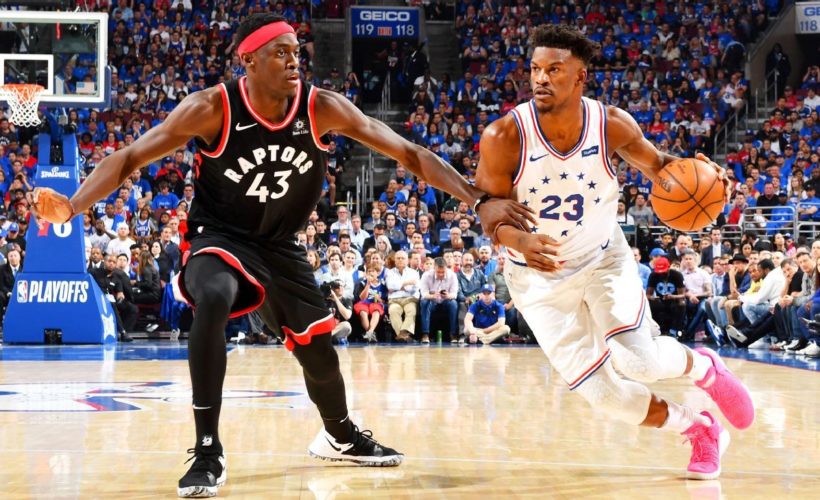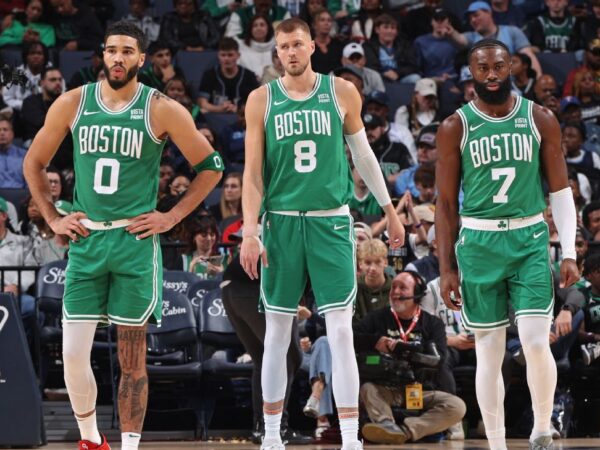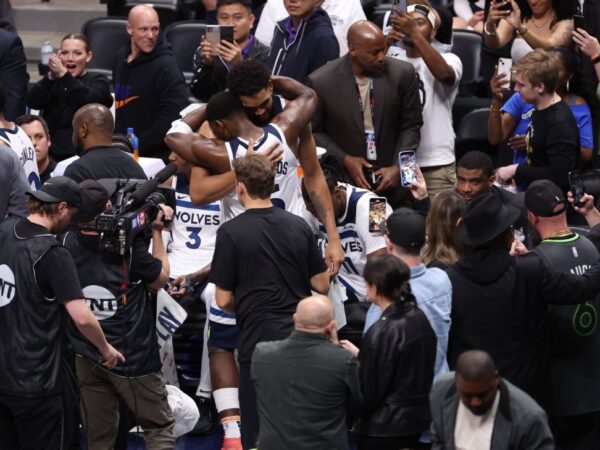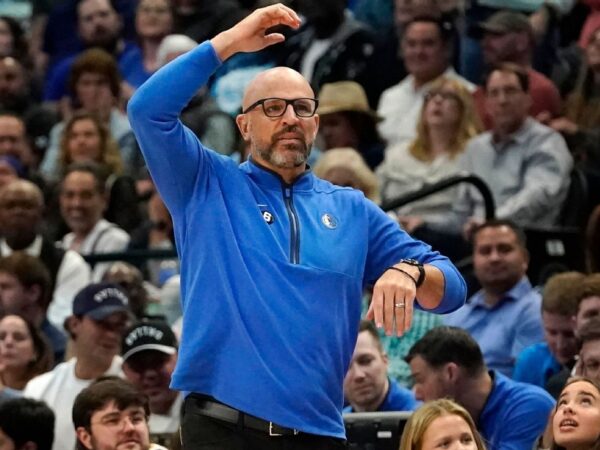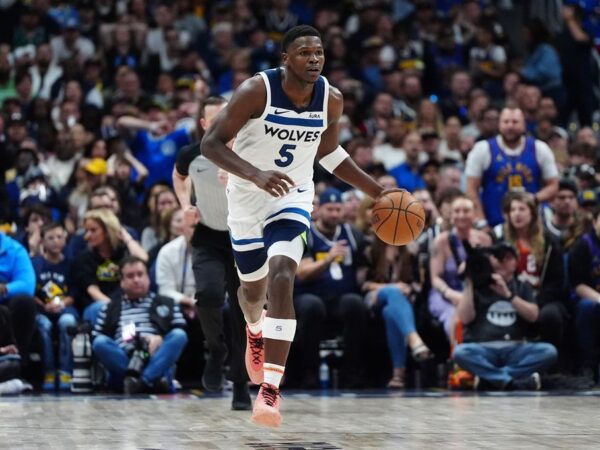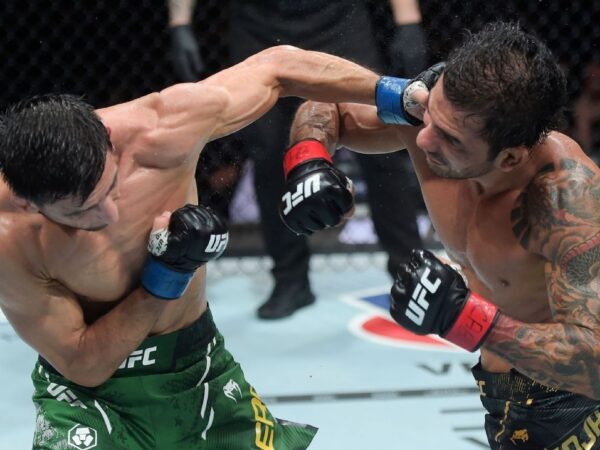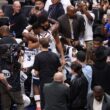Less than a week ago, the Toronto Raptors looked indomitable. After polishing off the Orlando Magic with four consecutive wins, the Raptors handled the Philadelphia 76ers in the opener of their conference semifinals by playing the kind of ferocious team defense that often signals championship potential. With a 45-point performance in Game 1, Kawhi Leonard added to what was shaping up to be one of the great individual postseason campaigns in NBA history.
The 76ers, on the other hand, looked a mess — an offense stuck in the mud, no response for Leonard, and a star center in Joel Embiid who was rendered ineffective by either health issues, Marc Gasol‘s resistance or a combination of both. The Sixers found some defensive answers in Game 2, as they escaped Toronto with a split, and although they maximized Jimmy Butler in the half court, a lot of offensive questions remained.
In Game 3, the Sixers assembled an exhibition of their best-case basketball. In 95 possessions, they were able to find quality shot opportunities in a variety of ways — a pick-and-roll attack led by Butler, clever off-ball actions to free up the likes of JJ Redick, Tobias Harris and Ben Simmons, a dash of mismatch basketball and a handful of timely transition buckets.
Meanwhile, the Raptors were unrecognizable in Game 3. One of the smartest units in basketball looked befuddled in the half court, unable to capitalize on its multifaceted skill sets to find creative solutions to the problems posed by the Sixers’ long, versatile defense. Leonard managed an efficient 32 points, but as Kyle Lowry said after the game, “We have to help him.”
For the Raptors, there might be fewer hands to provide that help. Pascal Siakam is listed as doubtful as he nurses a right calf contusion suffered during the loss on Thursday night.
The Sixers now lead the series 2-1, and Game 4 (Sunday, 3:30 p.m. ET on ABC) presents some interesting tactical challenges for both teams.
If Siakam doesn’t play, what do the Raptors do?
Siakam’s emergence has been one of the dominant themes for the Raptors this season, giving them another potent attacker who presents matchup nightmares. Siakam’s scoring output has also alleviated pressure on Lowry, allowing Lowry to facilitate, manage and keep mouths fed.
With OG Anunoby still recovering from an appendectomy, no comfortable options exist for Toronto should Siakam be unable to dress in Game 4. Anunoby is the ideal understudy at power forward, with size, athleticism and range to keep defenses honest.
The Raptors like the pace and ball movement they’ve traditionally gotten from lineups featuring Lowry alongside backup guard Fred VanVleet. But that would be a painfully small backcourt for a Raptors team already at a size disadvantage. Guard Norman Powell has a few inches on VanVleet, yet that would still necessitate upsizing Leonard to the 4 spot.
The Raptors could start Serge Ibaka, although the backup center has struggled during this series, looking downright detached at crucial moments. Alternatively, Raptors coach Nick Nurse could plug in Patrick McCaw into the starting lineup, which would maintain the rotation — although it’s worth asking, given the poor performance of the backup units, whether that rotation is worth preserving.
Can the Raptors unlock their offense with some ball movement?
Since the offense fell into the doldrums in Game 2, the Raptors and their coaching staff have emphasized ball movement as the antidote. Right now, they’re failing at that objective.
One way to achieve better movement: Facilitate more offense through Gasol, who has been rendered ineffectual. The 5-out, drive-and-kick sequences are efficient when they’re working, but Gasol has some natural gifts as a big man with size, instincts and finesse beyond just stretching the floor. Throughout his career, Gasol has been a savant at the high post, where he knows how to make good things happen. He’s a skilled big who can find high-percentage looks for teammates with handoffs, high-low actions, hitting baseline cutters and more. Right now, he’s not being asked to do any of that.
How can the Raptors rediscover their defensive mojo?
At their most effective, the Raptors field one of the most devastating defenses in the league, and for good reason: The personnel on an individual level is exceptional, and the collective intelligence of the unit is unparalleled in the East.
That combination is most obvious when the Raptors are deploying help defense. Take a guy such as Leonard, who has an uncommon ability to help off his primary assignment and wreak havoc while intuitively knowing when and how he’ll get back if the possession demands it. Lowry and Green both excel at these calculations, as well. And if a rotation is in order, Siakam’s quickness and versatility allow him to pick up any Sixer on the floor in a pinch.
Given this capacity, perhaps Toronto should be more aggressive in its half-court approach. The Raptors have doubled selectively, but given their personnel, they can probably tolerate more risk. The Sixers are a turnover-prone team, particularly Embiid, and a Raptors team that aggressively deploys some guerrilla tactics could potentially fluster a Sixers team that was far too comfortable running its stuff on Thursday night.
Can the Sixers keep Butler rolling?
While Butler certainly qualifies as a player who can create shots for himself, it’s much easier on him if the Sixers work as a unit to help him, which they have with good results.
Butler has given the Sixers their first legitimate pick-and-roll threat in years, and when Embiid rolls with any kind of conviction, all kinds of options open up. Embiid’s inclination will generally be to pop — it requires less work, and shooting 3s is fun. But if Embiid were willing to roll with Nikola Jokic-like frequency, he would help make both Butler and the Sixers’ overall offense more efficient.
Butler isn’t strictly a high-screen and isolation practitioner in this series. He has also worked off the ball along the baseline to free himself up as a potent second-side option, something we saw a couple of times in the first half on Thursday.
There are other avenues for Butler to pressure the Raptors’ defense and plenty of series left for the Sixers to explore that menu. In the meantime, movement and variety can keep the Raptors off-balance.
Make or miss?
When momentum seems to favor one team so radically, as it does for the Sixers heading into Game 4, it’s worth examining the quality of shots each team is generating. The Raptors concede that their defense in Game 3 and their ball movement over the past couple of games haven’t been up to their standards, but on Saturday, Nurse emphasized that he feels there have been plenty of opportunities available for the Raptors’ offense — they simply haven’t converted.
There’s some truth to that premise. Per Second Spectrum data over the three games in this series, the Raptors have generated a respectable quantified shot probability of 53 percent (the stat measures the team’s likely effective field goal percentage when you take into account the shooter, the attempt and the defense). No team in the second round has more greatly underperformed relative to its diet of shots — and it’s not even close.
The Sixers have to be pleased with what they concocted offensively in Game 3, and if Embiid can beat Lowry from long range in the series, they’re likely in good shape. But they’ll need to continue to cultivate some more high-percentage looks, because what came easy on Thursday is unlikely to be replicated.
Source:ESPN

